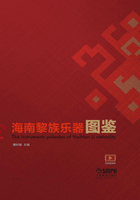
㗑
Bai

㗑形制图

㗑演奏图
㗑㗑,又名“竹唢呐”“唢呐”,竹制双簧气鸣乐器,由簧哨、管身和喇叭口三个部分组成。管身长短各异,从20厘米~30厘米都有,一般在35厘米左右。按音孔一般在中间三节竹管上,从5孔到8孔不等。传统的㗑多为6个孔(前五后一),改良后的则多为8个孔(前七后一)。 㗑声音悦耳响亮,表现力丰富,是婚礼上迎送新娘必不可少的乐器,也广泛运于用节日庆典、丰收狩猎等场合。
Bai, also named Suona or Zhu (bamboo) Suona, is a double-reed bamboo wind instrument. It consists of the reed whistle, the body and the mouthpiece. The body could be short or long, ranging from 20 cm ~ 30 cm, generally around 35 cm. There are five to eight finger holes on the body, mostly on the middle three sections (bamboo tubes). A traditional Bai usually has six finger holes (five in the front, one in the back), while an improved one mostly has eight (two additional in the front). Bai has a pleasant, resonant and expressive voice, which makes it an essential instrument for Chinese wedding. It’s also widely used in festivals, harvests, hunting and other occasions.

㗑演奏图